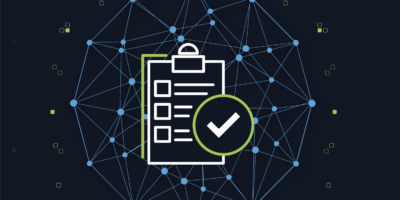With the increase in use of hybrid and multi-cloud application strategies complicating both setting and measuring compliance of network infrastructure, it’s no wonder enterprises are dealing inconsistent application of network configuration standards and network non-compliance. That’s why we’ve been putting a huge focus on helping enterprises solve the problems they’re facing when it comes to enforcing compliance on complex modern networks.
We’re not the only ones noticing it either. Recently, 451 Research put out a Business Impact Brief, “Automating Compliance Across Physical, Virtual, & Cloud Networks” outlining some of the key challenges you’re up against as well as the business impact your organization can realize by finding a way to combat them in order to achieve compliance across your entire network.
Let’s dive into some of the important findings that may help you along your automation journey.
The Current State of Network Compliance
What do we mean when we say, “network compliance?” Simply put, network compliance is the adherence to a set of standards an organization defines for its network related to security, reliability, and performance. These standards are driven by both internal and external factors including SLAs, business needs/strategies, and sometimes regulatory compliance requirements, but they are unique to every organization, and they should accurately reflect the business’ goals and needs. Network standards defined by an organization should be baked into the configuration of every configurable networking device, whether physical or virtual, on a network.
The absence of a coherent strategy and modern tools for enforcing compliance leaves many enterprise network teams operating in a ‘keep the lights on’ mode of non-compliance. So, what are the factors complicating network compliance in a typical enterprise?
Increasingly Complex Network Topologies
Remember back when everyone was trying to convince you that cloud services would make IT easier to manage? Yeah, that didn’t happen exactly the way they said it would. To be sure, cloud services bring a wealth of benefits to an organization but simplifying network topology is definitely not one of them. Networks in most enterprises these days are incredibly complex combinations of physical and virtual devices in data centers and branches, multiple cloud platforms, and SaaS products sometimes, often managed as separate network entities by different groups.
Siloed Teams
Who owns network configuration and compliance on a complex network? Well, it’s complicated. Traditional network engineering teams are typically responsible for ‘the network,’ but as we’ve demonstrated, the network isn’t just physical devices connecting your branches and data centers anymore. More often than not, network configuration in the public cloud is performed by CloudOps/DevOps teams. If CloudOps and the network team are siloed and configuring their respective parts of the network in a vacuum, you can bet that there are compliance problems.
Outdated Tools & Methods
What is the state of configuration on the network? Are network devices up-to-date with the latest software? Are configuration backups performed on a regular and sensible cadence? How are configuration changes managed and recorded? Will a proposed configuration change bring the network out of compliance or worse, cause an outage? Often the answers enterprises give to these questions indicate that much about configuration management on a network is unknown. That should give pause to everyone touching the network, employees and customers alike.
Modern Tools for Modern Networks
It’s an almost ridiculous understatement to say that enforcing compliance on a modern network with outdated tools and methods on siloed teams is difficult. Network teams need modern tools and approaches to configuration and compliance management; ones that take into account modern topologies and the realities of organizational structures that allow network configuration to happen outside of the purview of network engineering teams.
After defining the network standards for compliance, an organization can use a modern network automation platform, like Itential, to enforce compliance across a complex network. While Itential can’t fix the organizational structure of its clients, it can help network teams circumvent the silos and achieve network compliance. Only then can they fully realize the true business impact a compliant network can have on their organization.
Some of the capabilities the Itential Automation Platform provides enterprises to help achieve network compliance include:
- Create and Enforce a Golden Configuration – A Golden Configuration contains all of the important standards for a network and can be enforced across physical and virtual devices.
- Compliance Reporting – Automating regular compliance reporting can reveal devices that are out of compliance.
- Automated Remediation – If compliance reporting reveals a device out of compliance, remediation can be implemented through automation.
- Change Management Workflows – Itential integrates with ITSM tools like ServiceNow and allows you to create automation workflows that execute and document configuration changes anywhere on the network.
- Change Validation – Easily test configuration changes against a Golden Configuration prior to deployment to avoid outages and rollbacks.
If you’re interested in learning more about how modern network compliance, you can join me at any of 7-part webinar series that takes a deep dive into how organizations can define, plan, and implement modern network compliance processes to ensure that network changes never bring a device or service out of compliance.







